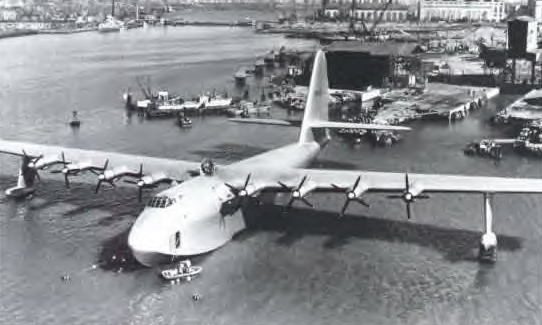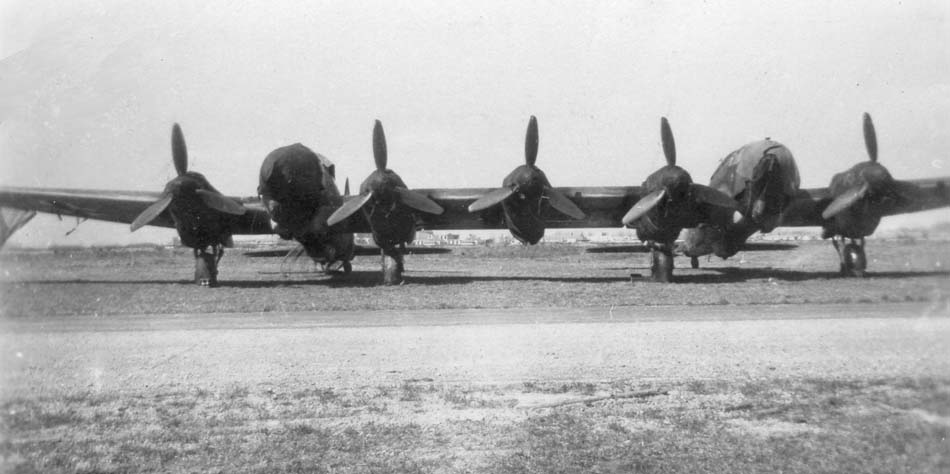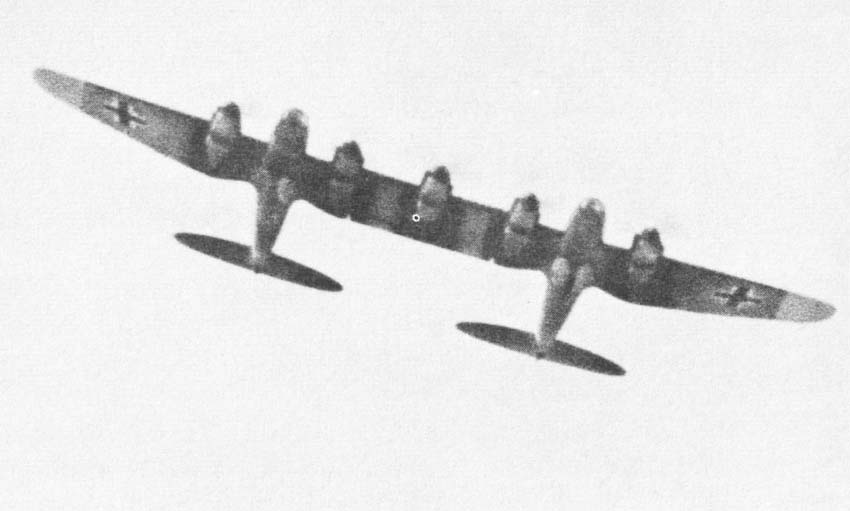Posted on 02/25/2015 2:25:40 PM PST by ckilmer
Paul Allen's giant satellite launch plane, called Stratolaunch, has been kept mostly under wraps since the project began – or at least as much under wraps as you can keep something with a 380-foot wingspan.
But now, new images from a California television station have revealed some interesting details about the aircraft.
Stratolaunch is Allen's bid to compete in launching satellites into low earth orbit.
Unlike competitor SpaceX, Allen's scheme depends on Stratolaunch to bring a rocket up high enough into the atmosphere to complete the rest of the trip efficiently. His company is teaming with Orbital Sciences, another leader in private sector launch technology.
The aircraft is the centerpiece of Allen's Stratolaunch Systems company, which is intended to reduce the cost of space launches by carrying a launch vehicle 30,000 feet in the air slung under the mammoth plane, then igniting the rocket motors.
The images of the plane in progress were released recently in a short television special by KGET in Bakersfield, Calif., about the innovative outer space industry in Mojave, California.
While the February special was catalyzed by the Oct. 31 the crash of SpaceShipTwo – entrepreneur Richard Branson's bid to get people into outer space – it includes some brief but amazing images of Allen's Stratolaunch being built in a hangar by Scaled Composites.
Scaled Composites is a small and innovative aerospace design house known for creating aircraft with unusual designs capable of unique accomplishments.
Founded by aircraft designer Burt Rutan, the company designed and built Global Flyer, which in 2005 broke the speed record for circling the globe without landing. Scaled Composites also built the Allen-funded SpaceShipOne, which completed the first privately owned manned space flight in 2004.
Among the shots is one of one of Stratolaunch's twin carbon fiber fuselages, showing the sheer bulk of it. Another seems to show the relationship of the two fuselages together.
The Stratolaunch video clips, visible as part of the piece, were shot in a carefully controlled environment, with Stratolaunch dictating exactly what could be photographed, said Jesse Cash, executive producer of the station.
Scaled Composites is building the Stratolaunch by harnessing six former 747 engines for power, and matching them to the new twin-hull composite aircraft.
About 80 percent of the assemblies are complete, and the mammoth aircraft is set to first fly in 2016. The aircraft is supposed to finish certification flights and launch its first space craft by 2018.
The work is being done in a 103,257-square-foot hangar and a 88,000-square-foot wing assembly building in Mojave, both custom-built for this purpose.
You are already above 70% of the atmosphere at that height. To go higher require a bigger launch vehicle with larger engines. They are looking for the economic sweet spot. If this works and it will, I would predict bigger vehicles and higher launch altitudes in the future.

I am sure there is an efficiency quotient there where the cost of lifting it further doesn’t result in a more effective launch.
I can see the long faces if they drop and it fails to burn.
I can also see the faces of the pilots when they light it up and the detachment mechanism fails.
Frankly, the photo reminds me of the WWII German attempt at marrying two craft together for very heavy transport.
White Knight 1

White Knight 2

Yeah, but “petite” comes to mind, not the WWII “heavy metal” more akin to Allen’s endeavor.
Impossible. These aren’t government projects.
#22: Spruce Goose. Then the largest US plane. Never got off the ground. A Howard Hughes fiasco.
The Germans had a larger seaplane that actually did fly and I met the American pilot that destroyed it in WW2. He also shot down two ME262’s one on the ground and one taking off.
His name possibly was George Drew. You can see a front camera film from his P-47 when he blew up a train in France full of ammo. The flames scorched his underside and wings.
Sorry, but it did. Howard flew it for about about a mile during taxi tests on 2 Nov ‘47 with crew and some reporters aboard. Just search on “Spruce Goose” on Wikipedia for more details.
Hughes H-4 Hercules
https://www.youtube.com/watch?v=M_auaeK2B7g
-
Let’s talk about the Glomar Explorer!
Heinkel He-111Z (Zwillig=Twin):



The pilot in the fighter guided the unmanned flying bomb to the release point and then separated.
What they said. :’) Getting a payload that large to that altitude requires composites and engineering that has rarely been done before. The C5 iterations came from Lockheed (which was in its heyday) and it’s difficult to find the real spec on that (for obvious reasons) but its max is said to be 35,000 (with the improved engines, that envelope may have changed a little), so having an operating altitude of 30K isn’t that farfetched. It’s probably the sweet spot between trying to maintain the airspeed needed to keep it out of stall and not burning so much fuel that it can’t make range (however, it uses in-air refueling regardless; in 1973 the C5’s then in use lifted the lion’s share of the wartime supplies to Israel, with one stop in the Azores each way).
During the X-Prize competition years ago, a Canadian entry was going to attempt balloon launching their vehicle, starting from a very high altitude to obviate the need for any main launch booster.
Burt Rutan finished first — SpaceShipOne.
Rutan’s involved in this project.
Still, a balloon launch is not a bad idea, at all. The crew vehicle has to land safely anyway, making recycling the system much simpler.
Au contraire — Howard Hughes flew the Spruce Goose just long enough to lift it off the water, to silence his detractors. I suppose, since it was a sea plane, saying it never got off the ground technically is correct.
http://fly.historicwings.com/wp-content/uploads/2012/11/HighFlight-SpruceGoose2.jpg
Hughes tried to build the plane out of wood, which was not considered a strategic material, in order to maximize the number of troops who could be moved and minimize the amount of time it took to move them. Of course, he had a different standard for flying craft, having crashed a number of them.
In addition, the pilot of the “parasite” fighter had a tv screen and something akin to a joystick to guide the unmanned flying bomb to its target.
The angle between the craft was developed by one of the Third Reich scientists who got paperclipped after the war; his angle was obtained by NASA for its design work, and used for the Space Shuttle.
Disclaimer: Opinions posted on Free Republic are those of the individual posters and do not necessarily represent the opinion of Free Republic or its management. All materials posted herein are protected by copyright law and the exemption for fair use of copyrighted works.